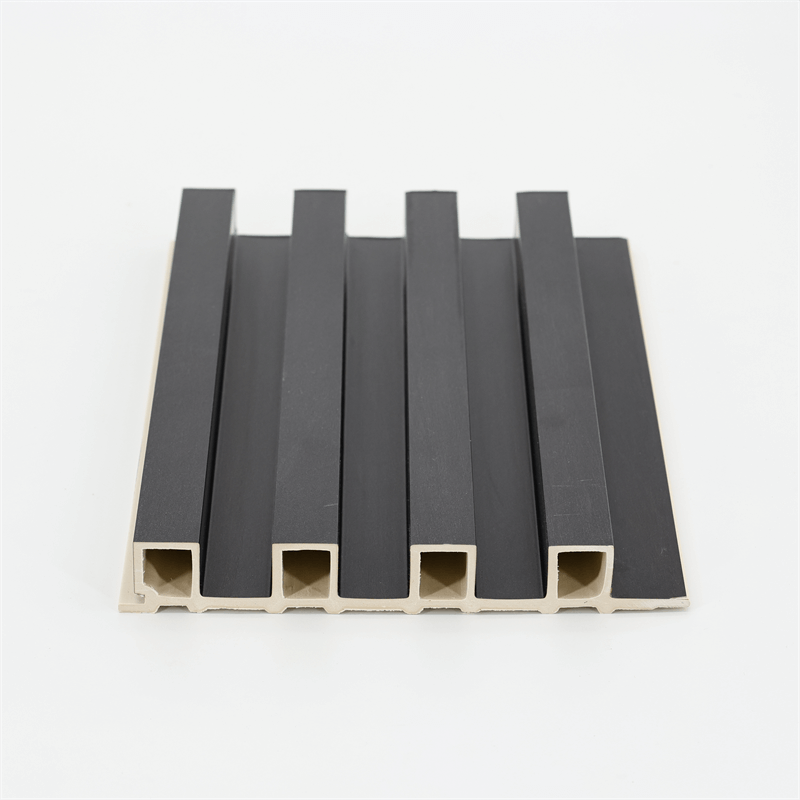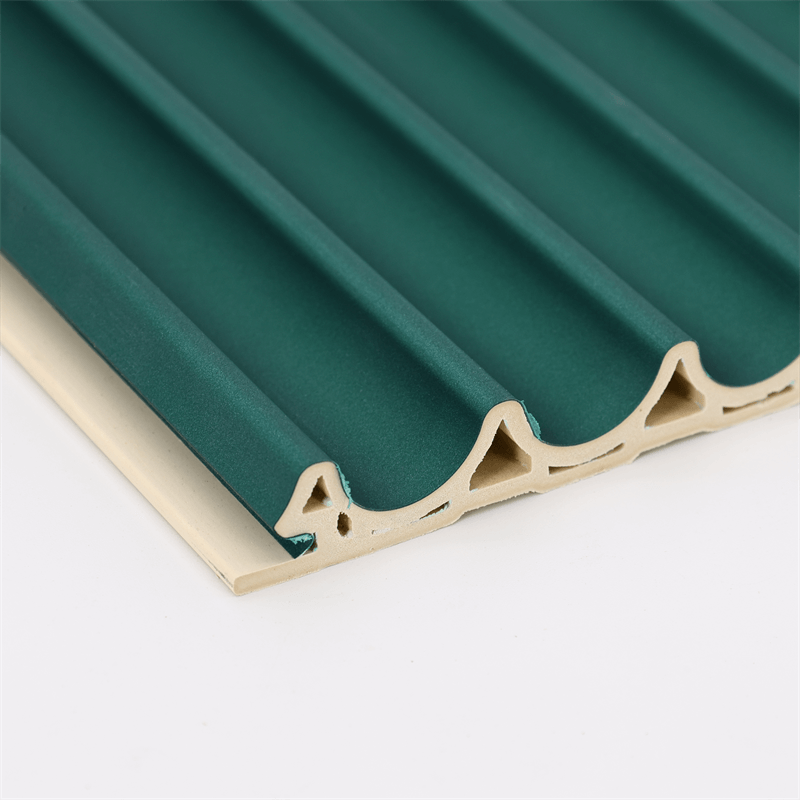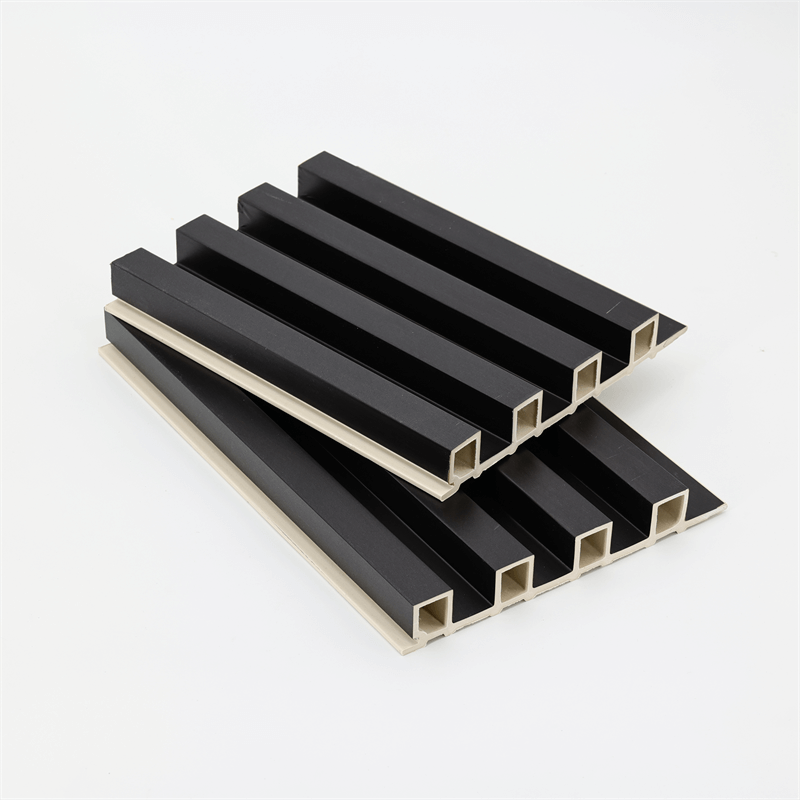As the world continues to prioritize sustainable practices, the field of interior design is embracing innovative materials that contribute to a greener future.
WPC (Wood-Plastic Composite) wall panels have emerged as a sustainable alternative to traditional wall materials, offering a combination of aesthetic appeal and environmental benefits.
This essay explores the sustainability of WPC wall panels, focusing on their use of recycled materials, energy efficiency in production, low carbon footprint, and contribution to green building certifications.
By delving into these aspects, we can understand how WPC wall panels are revolutionizing the industry and shaping a more sustainable approach to interior design.
I. Recycled Materials: Utilizing Waste for a Purpose
WPC wall panels are designed with sustainability in mind, as they are composed of a combination of recycled wood fibers and plastic polymers.
These materials are sourced from post-industrial and post-consumer waste, diverting them from landfills and giving them a new life.
By repurposing waste materials, WPC wall panels reduce the demand for virgin resources and contribute to the conservation of natural habitats.
This approach promotes a circular economy, where resources are utilized efficiently and waste is minimized.
II. Energy Efficiency in Production: Minimizing Environmental Impact
The production process of WPC wall panels is known for its energy efficiency, further enhancing their sustainability credentials.
Compared to the manufacturing of traditional wall materials, the production of WPC panels requires less energy consumption.
Additionally, the production of WPC wall panels emits fewer greenhouse gases, contributing to the reduction of carbon emissions.
This energy-efficient and low carbon footprint manufacturing process aligns with the goals of sustainable design and supports the global efforts to combat climate change.
III. Low Carbon Footprint: Reducing Environmental Impact
The use of WPC wall panels significantly reduces the carbon footprint associated with interior design and construction projects.
Traditional wall materials, such as concrete or brick, require a substantial amount of energy and resources for production and transportation.
In contrast, WPC wall panels have a lower carbon footprint due to their lightweight nature and energy-efficient production process.
By choosing WPC panels, designers and homeowners can actively contribute to reducing greenhouse gas emissions and mitigating the environmental impact of their projects.
IV. Contribution to Green Building Certifications: Meeting Sustainable Standards
The sustainability of WPC wall panels is further validated by their compliance with green building certifications.
These certifications, such as LEED (Leadership in Energy and Environmental Design), evaluate the environmental performance of buildings and their materials.
WPC wall panels, with their use of recycled materials and low carbon footprint, contribute to earning points towards green building certifications.
By incorporating WPC panels into interior design projects, professionals can demonstrate their commitment to sustainability and meet the rigorous standards set by green building programs.
WPC wall panels are driving the shift towards a greener future in interior design.
Through their use of recycled materials, energy-efficient production processes, low carbon footprint, and compliance with green building certifications, these panels exemplify sustainability in action.
By choosing WPC wall panels, designers and homeowners contribute to the conservation of resources, reduction of waste, and mitigation of greenhouse gas emissions.
As the world continues to prioritize sustainability, the adoption of WPC wall panels is expected to grow, transforming the industry and setting a new standard for environmentally conscious design.
By embracing the sustainability of WPC wall panels, we can create spaces that not only showcase aesthetic appeal but also contribute to a healthier planet.
As interior design evolves, the integration of sustainable materials like WPC panels is essential in designing for a greener future.
Together, we can shape a more sustainable and environmentally friendly approach to interior design, one WPC panel at a time.

In conclusion, WPC wall panels offer a sustainable solution for designing interior spaces with a reduced environmental impact.
Their use of recycled materials diverts waste from landfills and promotes a circular economy.
The energy-efficient production process minimizes energy consumption and greenhouse gas emissions, contributing to the global efforts to combat climate change.
The low carbon footprint of WPC wall panels sets a new standard for sustainable interior design, reducing the environmental impact of construction and renovation projects.
Furthermore, the adherence to green building certifications demonstrates the commitment of WPC wall panels to meeting stringent sustainability standards.
By incorporating WPC panels into interior design projects, professionals can showcase their dedication to sustainable practices and contribute to the creation of healthier indoor environments.
Designing for a greener future is no longer an option but a necessity.
The sustainability of WPC wall panels provides an opportunity for designers, architects, and homeowners to make conscious choices that positively impact the environment.
By embracing these innovative materials, we can create beautiful and functional spaces while minimizing our ecological footprint.
As the demand for sustainable design continues to grow, WPC wall panels are poised to play a crucial role in shaping the future of interior design.
By incorporating these panels into our projects, we can create spaces that not only reflect our aesthetic preferences but also prioritize the well-being of the planet.
The use of WPC wall panels is a testament to the fact that sustainability and design can coexist harmoniously, paving the way for a greener, more environmentally conscious future.
In the quest for sustainable design, let us embrace the versatility and beauty of WPC wall panels,
and collectively create spaces that are not only visually captivating but also promote a healthier and more sustainable world for generations to come.

In conclusion, the benefits of WPC wall panels in terms of sustainability are undeniable.
From their use of recycled materials to their energy-efficient production processes and low carbon footprint, these panels offer a greener alternative to traditional wall materials.
By incorporating WPC wall panels into interior design projects, we can contribute to the preservation of our environment and promote a more sustainable future.
The design industry has a responsibility to prioritize sustainability and embrace eco-friendly materials like WPC wall panels.
As consumers become increasingly conscious of their environmental impact, the demand for sustainable design solutions continues to rise.
WPC wall panels not only meet this demand but also offer a range of design options, allowing for creative freedom without compromising on sustainability.
By choosing WPC wall panels, we can create beautiful, functional spaces that reflect our values and contribute to a healthier planet.
These panels provide a bridge between aesthetics and sustainability, allowing us to design with a clear conscience.
As designers, architects, and consumers, it is our collective responsibility to make informed choices that have a positive impact on the environment.
WPC wall panels present an opportunity to transform our spaces while reducing our ecological footprint.
In conclusion, let us embrace the beauty and functionality of WPC wall panels, knowing that we are making a conscious choice towards a greener future.
By incorporating these panels into our design projects, we can create spaces that not only inspire and delight but also contribute to the well-being of our planet.
Together, we can pave the way for a more sustainable and environmentally conscious design industry.

